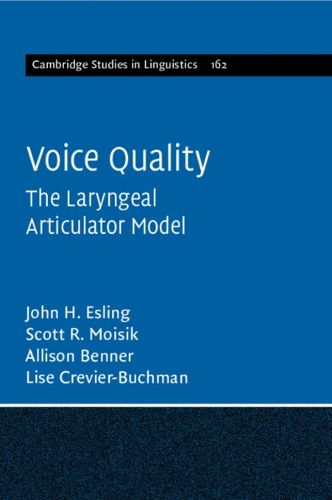Readings Newsletter
Become a Readings Member to make your shopping experience even easier.
Sign in or sign up for free!
You’re not far away from qualifying for FREE standard shipping within Australia
You’ve qualified for FREE standard shipping within Australia
The cart is loading…






The first description of voice quality production in forty years, this book provides a new framework for its study: The Laryngeal Articulator Model. Informed by instrumental examinations of the laryngeal articulatory mechanism, it revises our understanding of articulatory postures to explain the actions, vibrations and resonances generated in the epilarynx and pharynx. It focuses on the long-term auditory-articulatory component of accent in the languages of the world, explaining how voice quality relates to segmental and syllabic sounds. Phonetic illustrations of phonation types and of laryngeal and oral vocal tract articulatory postures are provided. Extensive video and audio material is available on a companion website. The book presents computational simulations, the laryngeal and voice quality foundations of infant speech acquisition, speech/voice disorders and surgeries that entail compensatory laryngeal articulator adjustment, and an exploration of the role of voice quality in sound change and of the larynx in the evolution of speech.
$9.00 standard shipping within Australia
FREE standard shipping within Australia for orders over $100.00
Express & International shipping calculated at checkout
The first description of voice quality production in forty years, this book provides a new framework for its study: The Laryngeal Articulator Model. Informed by instrumental examinations of the laryngeal articulatory mechanism, it revises our understanding of articulatory postures to explain the actions, vibrations and resonances generated in the epilarynx and pharynx. It focuses on the long-term auditory-articulatory component of accent in the languages of the world, explaining how voice quality relates to segmental and syllabic sounds. Phonetic illustrations of phonation types and of laryngeal and oral vocal tract articulatory postures are provided. Extensive video and audio material is available on a companion website. The book presents computational simulations, the laryngeal and voice quality foundations of infant speech acquisition, speech/voice disorders and surgeries that entail compensatory laryngeal articulator adjustment, and an exploration of the role of voice quality in sound change and of the larynx in the evolution of speech.